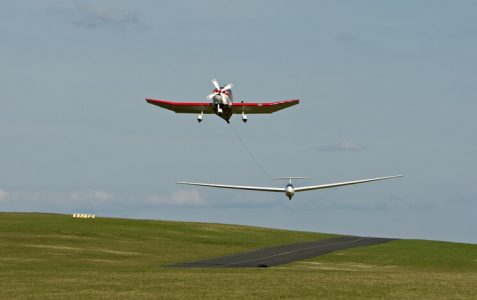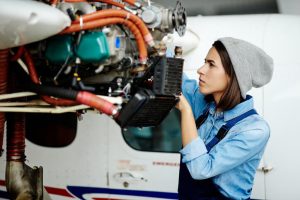Pilot Training Could Evolve as Electric Aircraft Get an Assist
As the aviation industry continues to evolve, new technologies are emerging that are set to revolutionize the way we fly. One such technology is autonomous towing for electric airplanes, which offers a safer, more efficient, and sustainable alternative to traditional aircraft towing methods. This innovative pilot training solution enables pilots to remotely control the towing of aircraft, removing the need for ground personnel to manually move planes on the tarmac.
The world’s first “aerotow” has been successfully demonstrated by Magpie Aviation, which involved joining two airplanes mid-flight. The concept behind this is intriguing as it aims to prove that a larger electric passenger airplane can go the distance if it is pulled by a smaller autonomous airplane loaded with batteries.
The tow aircraft attaches an “active hook” to the larger aircraft’s nose, allowing it to save power and provide a noiseless ride to passengers. This innovation gets even more exciting on longer flights, as the tow vehicle can be replaced by a newly charged vehicle on the way, enabling the passenger aircraft to keep flying without stopping to recharge.
The Importance of Electric Airplanes
This cutting-edge technology offers the most cost-effective solution for large electric airplanes to cover longer distances with zero emissions. Moreover, the connection technology is completely automated, making it easier than the aerial refueling “probe and drogue” technique. There are a few reasons why companies are looking for ways to cut aviation emissions:
- Carbon emissions from aircraft contribute to global warming, which has severe environmental consequences such as rising sea levels, more frequent natural disasters, and loss of biodiversity.
- Electric airplanes are a better alternative to traditional aircraft because they produce zero carbon emissions and have lower operating costs.
- Investing in electric airplanes can contribute to lowering carbon footprints by reducing the amount of fossil fuels burned during flights.
- Developing sustainable aviation fuels is another important step towards reducing carbon emissions from the aviation industry. These fuels can reduce carbon emissions by up to 80% compared to traditional jet fuel.
- A shift towards a cleaner aviation industry can positively impact our future by reducing carbon emissions, improving air quality, and supporting sustainable economic development.
Benefits of Electric Airplanes
With aviation contributing to 2.5% of global carbon emissions, it is imperative for our industry to shift toward more sustainable practices. One solution is the introduction of large electric airplanes and zero-emissions flight. Electric-powered aircraft have the potential to significantly reduce greenhouse gas emissions and provide a more environmentally friendly option for air travel. While there are challenges to overcome, such as limited range and battery life, industry leaders are already working on addressing these constraints.
The benefits of electric-powered airplanes are numerous. They include reduced emissions, lower maintenance costs, and quieter flights. Moreover, electric airplanes have the potential to open new markets for air travel and improve accessibility for communities that are currently underserved. This shift towards electric passenger flights would not only benefit the environment but also society at large, improving air quality and reducing noise pollution in urban areas.
A shift towards zero-emissions flying could make the aviation industry more sustainable in the long term, providing a pathway towards a net-zero carbon future. By embracing electric technology and investing in sustainable practices, the aviation industry has an opportunity to lead the way towards a cleaner, greener future. The time to act is now, and we must work together to ensure that the aviation industry pursues a sustainable path forward.
While there are some questions about the technology operating under poor weather conditions, the results so far are impressive. This innovation offers a glimpse into the exciting possibilities for a greener aviation system.
Conclusion
Autonomous tow technology represents a significant advancement in the aviation industry, offering a safer, more efficient, and sustainable method for moving electric airplanes on the tarmac. With the development of this technology, pilots can now remotely control the towing of aircraft, which removes the need for ground personnel to manually move planes, reducing the risk of accidents and injuries. Furthermore, this technology is set to revolutionize flight training, enabling pilots to master new skills that are essential for the future of aviation. While this technology is still in its early stages, the potential benefits for the aviation industry are tremendous. As we continue to witness advancements in this field, it is vital that we embrace these changes and work to ensure that they are implemented safely.










